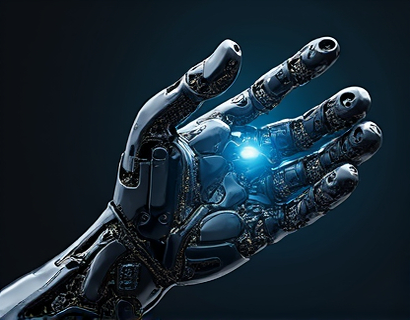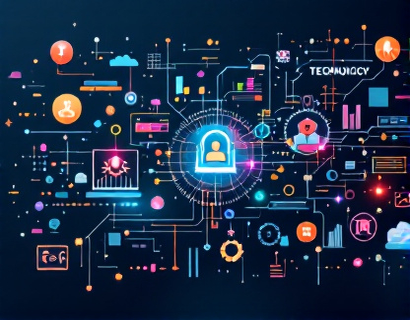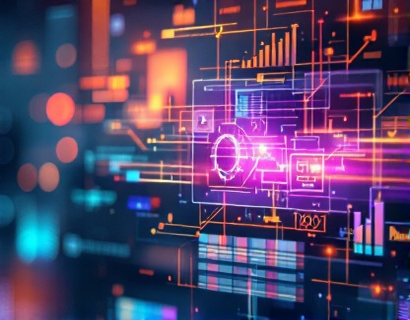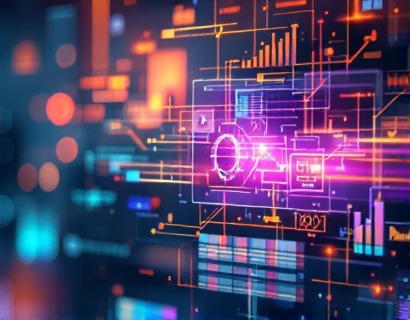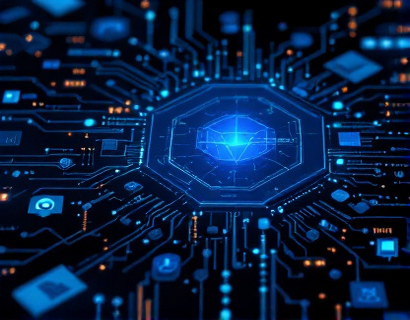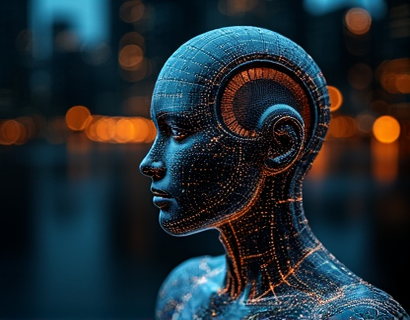Transforming Digital Experiences: The Synergy of Crypto and AI
The intersection of cryptocurrency and artificial intelligence (AI) is giving rise to a new era of digital experiences, characterized by enhanced user engagement and innovative next-generation solutions. This fusion is not just a technological curiosity but a transformative force that is reshaping how we interact with digital services. As tech enthusiasts and professionals, understanding the dynamics of this synergy is crucial for grasping the future of digital services and the profound impact of cutting-edge technology.
The integration of blockchain technology with AI is creating a robust framework for developing applications that are not only secure and transparent but also highly adaptive and user-centric. This article delves into the latest advancements in tech-driven applications, exploring how these innovations are enhancing user engagement and setting new standards in the digital landscape.
Enhanced Security and Trust
One of the most significant benefits of combining cryptocurrency and AI is the enhancement of security and trust in digital interactions. Blockchain's inherent properties, such as immutability and decentralization, provide a solid foundation for secure data storage and transaction processing. AI, with its advanced algorithms and machine learning capabilities, can further fortify these systems by detecting and mitigating potential threats in real-time.
For instance, AI-driven security protocols can analyze patterns and anomalies in blockchain transactions, identifying suspicious activities that traditional methods might miss. This proactive approach ensures that user data and assets remain protected, fostering a higher level of trust in digital platforms. As users become more aware of data privacy concerns, the combination of blockchain and AI offers a compelling solution that addresses these fears head-on.
Personalized User Experiences
AI's ability to process vast amounts of data and derive meaningful insights is revolutionizing the way digital services cater to individual users. By leveraging blockchain, these services can ensure that user data is managed securely and transparently, allowing for more personalized and trusted interactions. AI algorithms can analyze user behavior, preferences, and feedback to create tailored experiences that enhance engagement and satisfaction.
For example, a digital content platform can use AI to curate a personalized feed for each user based on their viewing history and preferences. Blockchain ensures that the data used for personalization is secure and that users have control over their information. This not only improves the user experience but also builds a stronger relationship between the platform and its users, leading to higher retention rates and increased loyalty.
Decentralized Applications (DApps)
Decentralized applications, or DApps, are a prime example of how cryptocurrency and AI are transforming digital experiences. DApps operate on blockchain networks, eliminating the need for centralized authorities and intermediaries. AI enhances these applications by providing intelligent and adaptive functionalities that respond to user needs in real-time.
Consider a decentralized finance (DeFi) platform that uses AI to optimize trading strategies and risk management. The AI can analyze market trends, predict price movements, and adjust investment strategies accordingly. All transactions and data are recorded on the blockchain, ensuring transparency and security. Users benefit from a more efficient and trustworthy financial ecosystem, where they have greater control over their assets and decisions.
Smart Contracts and Automated Processes
Smart contracts, self-executing contracts with the terms directly written into code, are another area where the combination of cryptocurrency and AI is making a significant impact. AI can enhance smart contracts by adding layers of intelligence and adaptability, making them more versatile and efficient.
For instance, in supply chain management, AI can monitor and analyze data from various sources, such as sensors and IoT devices, to ensure the smooth and secure movement of goods. Smart contracts can automatically execute payments and update contract terms based on real-time data, reducing delays and errors. This not only streamlines processes but also builds trust among all parties involved, as every step is transparent and verifiable on the blockchain.
Enhanced User Interfaces and Interactions
The user interface (UI) and user experience (UX) of digital services are being redefined by the integration of AI and cryptocurrency. AI-driven UIs can adapt to user preferences and behaviors, providing a more intuitive and seamless interaction. Blockchain ensures that user preferences and settings are securely stored and managed, allowing for consistent and personalized experiences across different devices and platforms.
Voice assistants and chatbots powered by AI are becoming increasingly sophisticated, thanks to the data and computational power provided by blockchain. These AI-driven interfaces can handle complex tasks, from booking appointments to providing customer support, all while maintaining a high level of security and privacy. Users enjoy a more convenient and efficient interaction with digital services, leading to higher satisfaction and engagement.
Data Ownership and Privacy
Data ownership and privacy are critical concerns in the digital age, and the combination of cryptocurrency and AI offers innovative solutions to these challenges. Blockchain provides a decentralized and secure way to manage user data, giving individuals control over their information. AI can help in anonymizing and encrypting data, ensuring that sensitive information remains protected while still being useful for personalized services.
For example, a health management app can use AI to analyze patient data and provide personalized health recommendations. The data is stored on a blockchain, ensuring that patients have full control over who accesses their information. AI algorithms can detect and prevent unauthorized access, maintaining the integrity and privacy of user data. This approach not only enhances user trust but also complies with stringent data protection regulations.
Incentivization and Tokenomics
The use of cryptocurrency in digital services introduces new models of incentivization, driven by tokenomics. Tokens can be used to reward users for their contributions, such as providing data, participating in community governance, or completing tasks. AI can optimize these token-based systems by analyzing user behavior and adjusting reward mechanisms to maximize engagement and participation.
In a gamified learning platform, AI can track user progress and award tokens based on achievements and milestones. These tokens can be used to unlock premium content, participate in exclusive events, or even traded for other assets. The combination of blockchain and AI ensures that the token economy is transparent, fair, and aligned with user interests, fostering a more engaged and active community.
Future Prospects and Challenges
The synergy of cryptocurrency and AI holds immense potential for the future of digital services, but it also comes with challenges that need to be addressed. Scalability, regulatory compliance, and user adoption are key areas that require attention and innovation. As the technology matures, we can expect to see more robust solutions that overcome these hurdles, paving the way for a more interconnected and intelligent digital world.
One of the major challenges is scalability. Blockchain networks, while secure, can be slow and expensive to operate at scale. AI can play a role in optimizing blockchain performance by predicting network congestion and dynamically adjusting resource allocation. Additionally, layer 2 solutions and cross-chain interoperability are emerging as promising approaches to enhance scalability.
Regulatory compliance is another critical aspect. As governments around the world begin to recognize and regulate cryptocurrencies and AI, compliance becomes essential for the sustainable growth of these technologies. AI can help in navigating the complex regulatory landscape by providing real-time updates and ensuring that digital services adhere to local and international laws.
User adoption is crucial for the widespread success of crypto and AI-driven services. Education and awareness campaigns can play a significant role in demystifying these technologies and highlighting their benefits. By demonstrating tangible improvements in user experience and security, more individuals and businesses will be inclined to embrace these innovative solutions.
In conclusion, the merging of cryptocurrency and AI is not just a technological trend but a transformative force that is redefining digital experiences. By enhancing security, personalization, and efficiency, these technologies are setting new standards in user engagement and service delivery. As we continue to explore and innovate at the intersection of blockchain and AI, the future of digital services looks brighter and more promising than ever.








